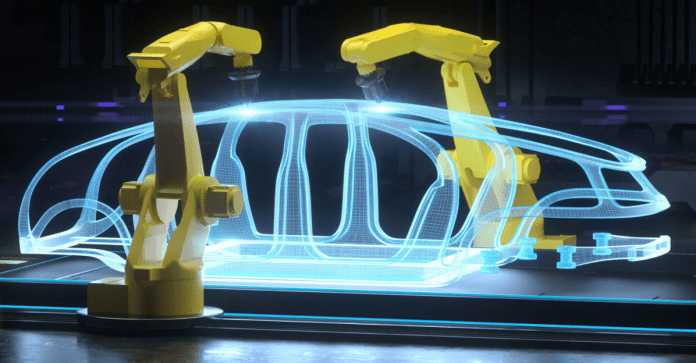Arm has introduced a suite of new safety-critical computing solutions for autonomous systems in the automotive and industrial sectors. The UK-based firm said its new silicon design blueprints are designed for high-powered computing scenarios where safety is a critical factor. In particular, it highlighted usage in autonomous driving systems and in industrial automation setups.
The market for silicon for autonomous workloads will hit $8 billion by 2030, it said.
The new suite of IP includes the Arm Cortex-A78AE CPU, Arm Mali-G78AE GPU, and Arm Mali-C71AE ISP. These represent a “step change in compute” for automotive and industrial markets. The trio are engineered to combine with supporting software to enable silicon providers and OEMs to design for self-driving vehicles and industrial machines.
Chet Babla, vice president of Arm’s automotive and IoT business division, said: “Autonomy has the potential to improve every aspect of our lives, but only if built on a safe and secure computing foundation. As autonomous decision-making becomes more pervasive, Arm has designed a unique suite of technology that prioritizes safety while delivering highly scalable, power efficient compute to enable autonomous decision-making.”
The Arm Cortex-A78AE CPU is billed as Arm’s “highest performance safety capable” CPU, able to run complex workloads for applications such as mobile robotics and driverless transportation. It delivers a 30 percent performance jump in performance compared to its forebears, said Arm.
The Cortex-A78AE CPU supports features to meet the ISO 26262 and IEC 61508 automotive and industrial safety integrity standards (ASIL and SIL), up to levels D and 3, respectively. It also has a new hybrid-mode ‘Split Lock’ functionality to enable applications that target lower ASIL levels without compromising performance, and deployment of the same SoC compute architecture into different domain controllers.
The Mali-G78AE, which follows from the popular Mali GPU, is Arm’s first to be designed for safety first. It brings ‘flexible partitioning’, with up to four partitions for workload separation; for example, an infotainment system, an ASIL-B level instrument cluster, and a driver monitoring system can now run separately in the same GPU, said Arm. The point is to enable GPU resources to be safely utilised for human machine interfaces or for heterogenous compute in autonomous systems.
Meanwhile, the Mali-C71AE image processing unit supports higher-grade computer vision processing, from four real-time cameras or 16 buffered cameras, delivering throughput at 1.2 giga pixels per second. It is geared towards human and machine vision applications, such as production line monitoring and ADAS camera systems, and supports features to achieve ASIL B / SIL2 safety levels. It is optimised for autonomous driving (and factory operations) in varied lighting conditions.
Arm said its suite of autonomous IP – including processor (CPU), graphics processor (GPU) and image signal processor (ISP) – is designed from the ground up to provide developers with the tools to design and deploy safety-critical autonomous systems.
Writing in a blog post, Bable said: “While technology has evolved to do its part of the process faster and more efficiently, humans have not. In short, we humans have become the bottleneck. And the solution is to give compute systems the power of informed, autonomous decision making.”
He noted the progress in advanced ‘smart’ manufacturing towards autonomous factories, and the extant need for safe and highly-controlled computing resources to spring the revolution.
He said: “We’re some way away from a full ‘lights out’ scenario in which autonomous robots perform all tasks within a factory. But we are already seeing deployment of robots operating autonomously within fixed physical boundaries within warehouses, and machine learning (ML) used to identify issues with items on a production line or take systems offline if they are deemed to be showing signs of imminent failure.”
“Autonomous systems are also already enabling aspects of smart manufacturing and warehousing, optimizing the production line and associated logistics through more efficient use of resources and the ability to meet changing customer and logistical needs. These examples represent the beginning of a journey towards true technological autonomy. But it’s a journey that will not occur overnight, and one that will require key enabling technologies along the way.”
He added: “Arm technology addresses the needs of the ‘next mile’ in autonomous systems design. Arm’s new suite of autonomous IP is designed to make it easier than ever before for developers of future autonomous systems to bring their vision to life as quickly, securely and efficiently as possible, while addressing industry safety standards such as ISO 26262 for automotive and IEC 61508 for industrial.”
The company pointed, as well, to its Project Cassini initiative to underline its work towards new compute-powered autonomous systems. Project Cassini is developing platform standards and reference systems to establish a cloud-native software experience for a secure edge-based compute and networking infrastructure.
The company is also working with multiple open source communities and specialist software vendors to enable the autonomous software ecosystem and drive new development to support the features required for autonomous workloads.

